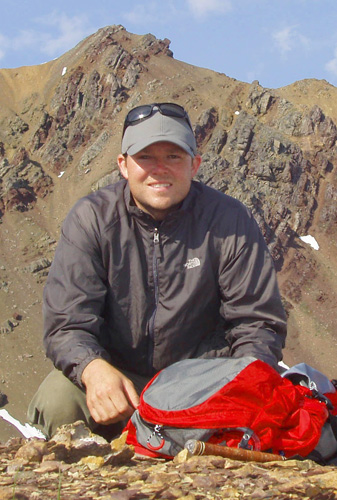Brian Hampton

View CV
Biography
SEDIMENTOLOGY – STRATIGRAPHY – TECTONICS
Brian A. Hampton
Associate Professor
PhD – Purdue University (2006)
Dept. of Geological Sciences/MSC 3AB
P.O. Box 30001
New Mexico State University
Las Cruces, NM 88003 USA
Email: bhampton@nmsu.edu
Phone: 575 – 646 – 2997
Office: Gardiner Hall – 158
My research centers on the interplay between erosion and sedimentation with particular emphasis on field-based studies that examine the stratigraphic history and tectonic evolution of sedimentary basins. The Basin Research Lab at NMSU applies the skill sets of sedimentology, stratigraphy, structure, petrology, geochronology, geochemistry, and geologic mapping to better understand the exhumation history of mountain belts as preserved in sedimentary basins. The primary aim with these approaches is to comprehensively analyze the stratigraphic record across a range of scales that include:
- System-scale studies that utilize sedimentary facies and stratigraphic architectural to better understand internal and external controls on sedimentation and the organization of depositional systems
- Basin-scale provenance studies that utilize trends in sandstone modal composition and detrital geochronology and geochemistry to better constrain exhumation, sediment source, and dispersal patterns
- Lithosphere-scale studies that involve identification of modern and active tectonic settings as analogs for ancient plate and basin configurations
Research Significance & Impact
Sedimentary basin strata contain numerous potential data sets that can be used to address a wide range of scientific questions. Modern and ancient sedimentary deposits contain the stratigraphic record of both local and regional tectonic, climatic, and sea-level changes in the recent past and throughout Earth’s history. Sedimentary basins also contain a majority of the Earth’s oil, natural gas, and coal resources in addition to subsurface water resources in the form of groundwater aquifers. Modern sedimentary basins are often located in some of the more fertile regions on Earth resulting in them housing much of the world’s agriculture and sustaining large population centers. Some of these highly-populated regions (e.g., Istanbul, Taiwan, central China, southern California) are near modern tectonic plate boundaries that are characterized by seismically-active faults and deformation from large earthquakes.
At the largest scale, the stratigraphic record allows us to better understand how Earth’s tectonic and climatic systems evolved throughout geologic time. A comprehensive understanding of the architecture and organization of sedimentary deposits aids in predicting the location and volume of water and hydrocarbon-related natural resources in sedimentary basins.
Research Highlights
“ Shedding light on the Farewell terrane, SW Alaska” – Research Media/International Innovations


